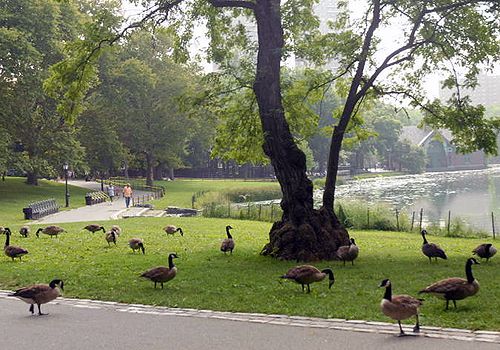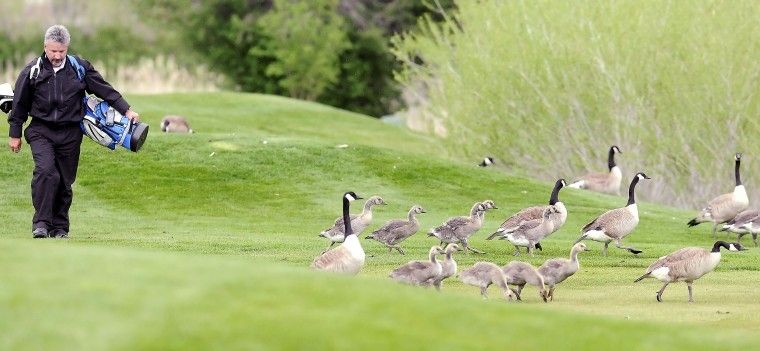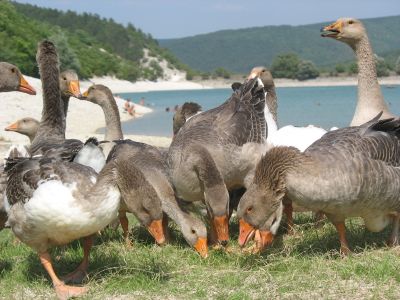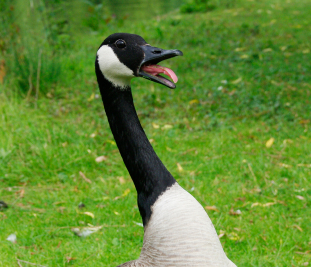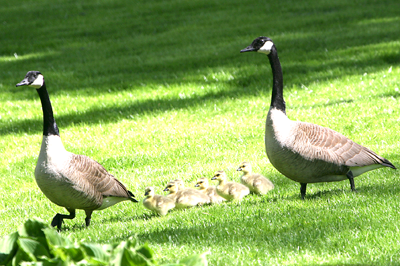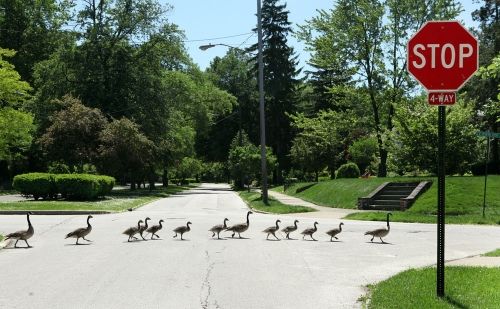
If you manage a golf course, corporate lawn, private park or commercial greenbelt, large bird pests like geese can pose quite a problem. In addition to their noise and aggressive behavior (they have been known to attack passersby), they can create a huge mess in droppings. Unless these droppings are promptly cleaned up, they can permeate an entire area with a very unpleasant odor. If you’ve ever had a run in with geese, you know that they can trample and destroy flowerbeds and other delicate plants. Geese droppings also carry disease. They can contaminate ponds and other decorative water features on your property.
There’s no two ways about it: pest geese can add considerable cost to your overall maintenance operation. Without effective and humane goose controls, getting rid of geese can pose a challenge. Blasting them water hoses or scaring geese with noise is an ineffective way to scare birds like these. The same holds true for pellet guns and poisons. In some cases, the latter two measures may even be illegal, resulting in costly fines.
Fortunately, the bird control experts at Bird-B-Gone offer a humane and effective goose deterrent that will keep geese off your commercial property. It’s called the Solar Bird Chase Super Sonic.
Scare Birds with Sounds They Fear
The Solar Bird Chase Super Sonic has been scientifically designed to deter geese using sounds they fear. It broadcasts pre-recorded goose distress calls that convince geese that their fellow geese are being attacked by predators. The sounds are broadcast for two minutes and repeated every 10 minutes to convince geese that the threat is ever present and real. As a result, geese will leave the area for safer pastures.
Deter Bird Pests from Large Open Spaces
Humane and effective, the Solar Bird Chase Super Sonic goose deterrent was designed to discourage geese from occupying golf courses, greenbelts and commercial parklands. The device comes with a built-in speaker and three satellite speakers to cover up to three acres. Additional speakers can be added to extend the coverage range to five acres. The satellite speakers come with 100 feet of wire and connect to the back of the device. The device’s power cord connects easily to any standard 110-volt AC source.
Ruggedly Designed and Easily Adjustable
The Solar Bird Chase Super Sonic is designed for outdoor use. The rugged, high quality device is constructed of UV-protected materials to ensure it remains both sun- and weather-resistant. A convenient LCD display panel lets you adjust the volume and program the device to automatically shut off at night.
An Ounce of Prevention
Needless to say, if you want to ensure your commercial property or golf course is not overrun by geese, the best time to install this goose deterrent is before the geese arrive.
]]>
